
Home grown
Brief:
My team and I where tasked with creating an alterinve building material, and the imganry future that it exists in. This was a live breif with Imganation, a design studio based in London.
Research :
I started researching concrete and its use in our world, its uses, environmental impact, and issues. Then I started researching alternatives to concrete. I found several interesting alternative substances and alternative construction processes. However most of these "alternatives" still use concrete. As a team, we decided that due to the environmental impact of traditional concrete production, it doesn't have a place in the post-growth world. One of my team members (Millie) found the alternative Hempcrete.
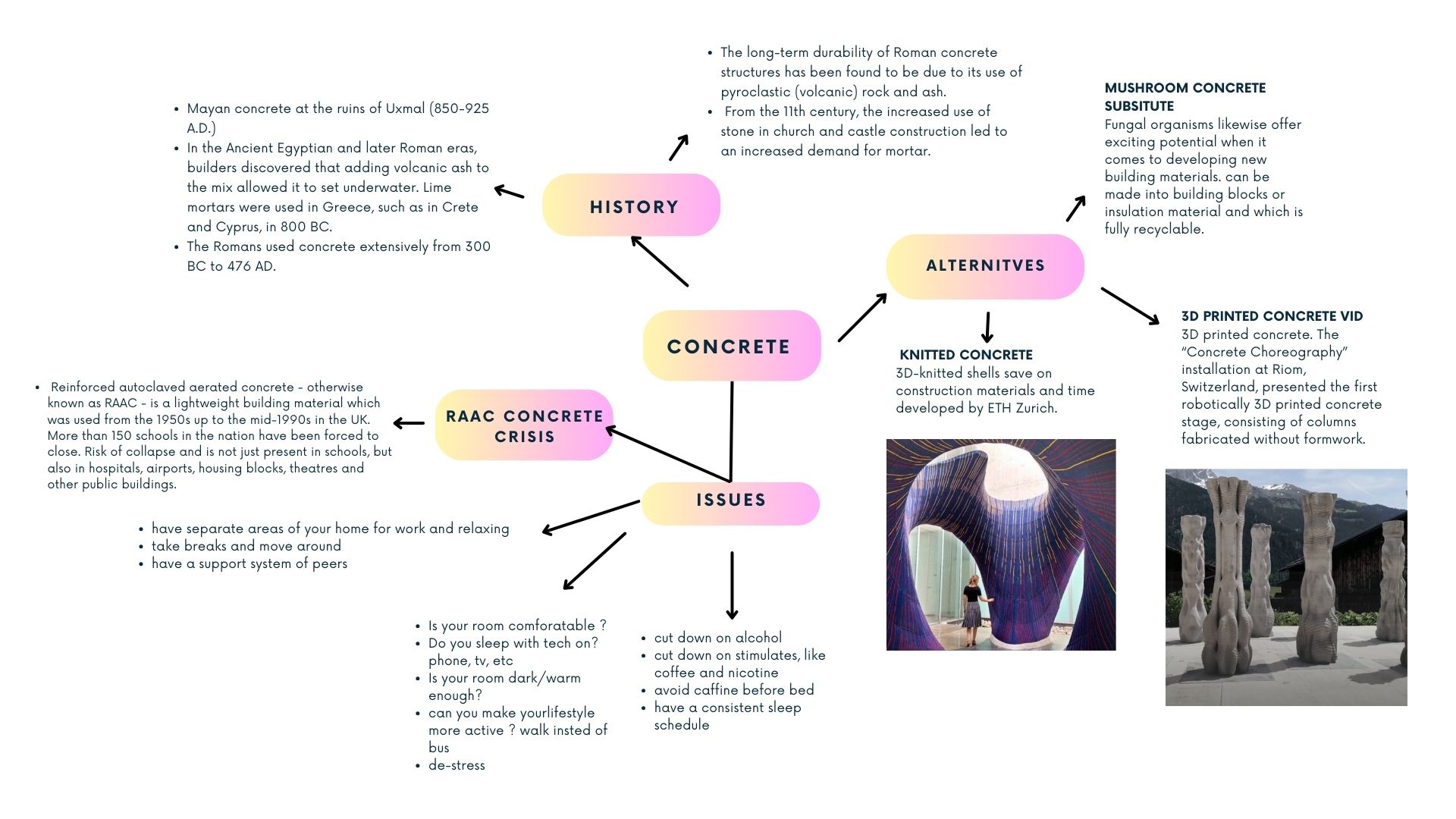
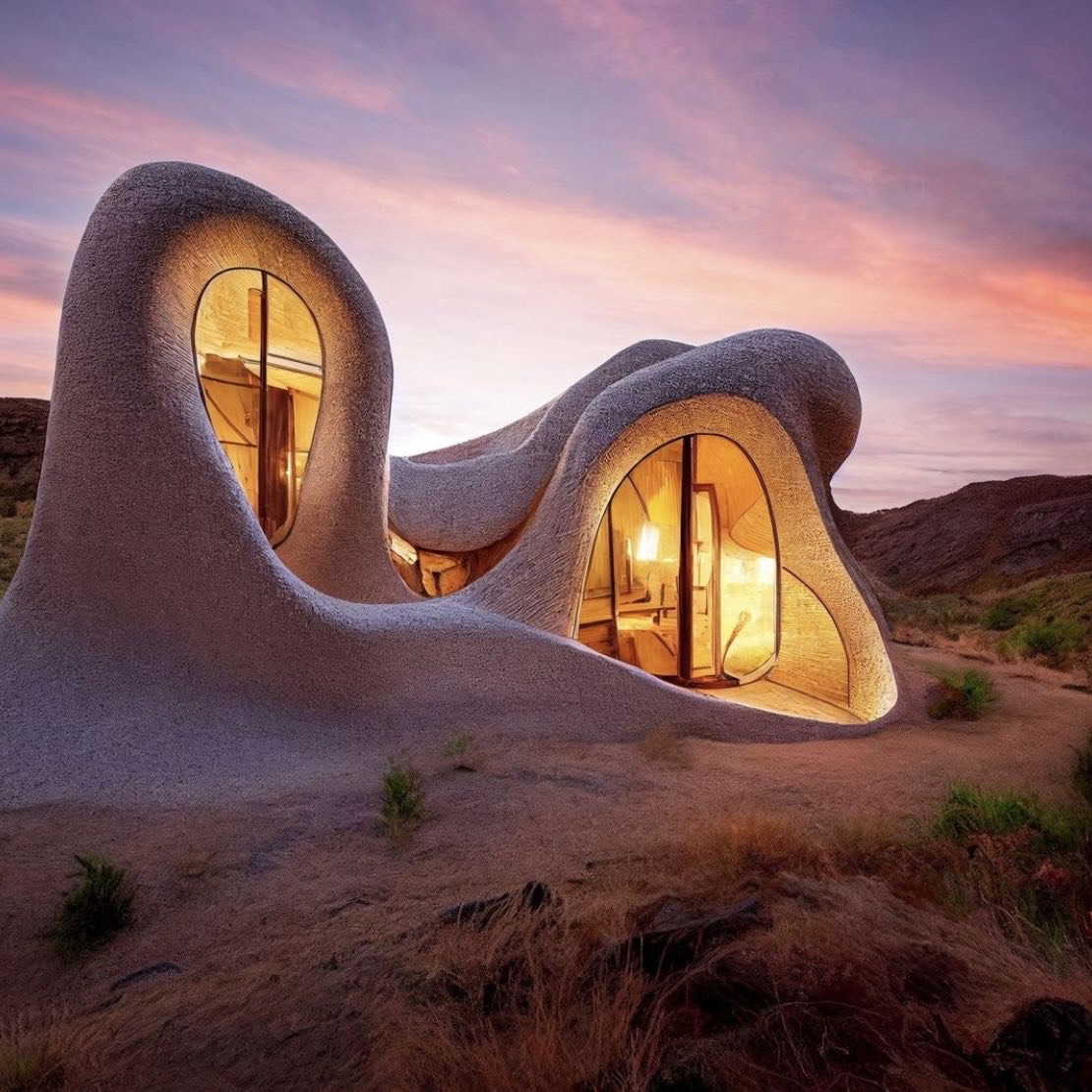
Our Imaginary:
Our Imaginary is centered around low environmental impact, the longevity of products, and community. In our Imaginary, concrete has been replaced with a more sustainable alternative, Hempcrete.
Hempcrete is made using the inner woody core of the hemp plant, a lime-based binder, and water. During its short growing period, hemp absorbs 165kg of Co2. It even continues to absorb small amounts of Co2 in brick form. My contribution to developing our Imaginary was the focus on creating a sense of community. Instead of creating individual houses, we promoted a more connected ecosystem of living.
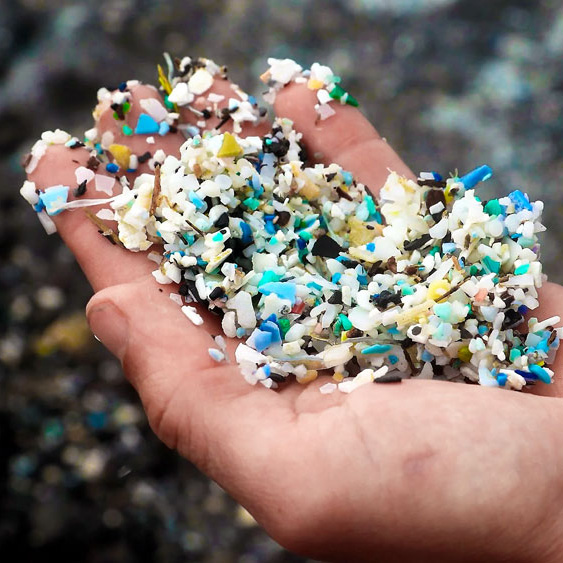
One of my initial ideas was to use microplastics removed from the environment, as a replacement for sand in concrete mix. It is a specific type of course large-grain sand that is used, it can't be substituted for beach sand. Microplastics could be a viable substitute as they are similar in size and roughness to construction sand. However, I decided not to push forward this idea because I felt that it didn't address the bigger issue with concrete, its Co2 emissions.
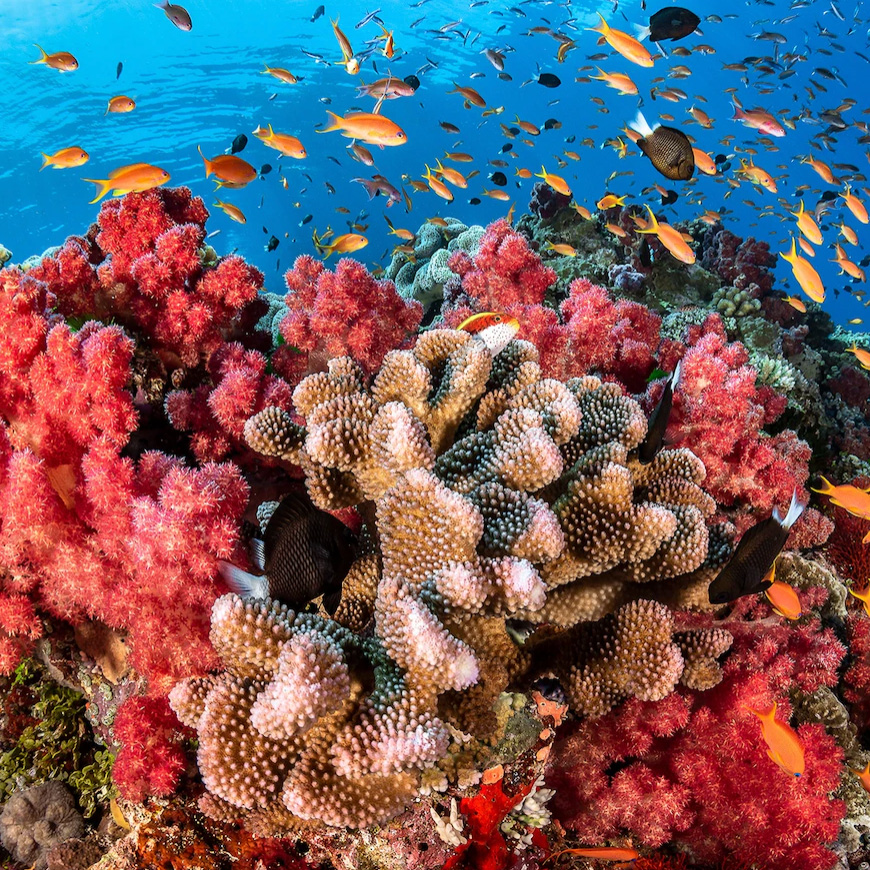
My second idea was to use sections of discarded and rubbled concrete as a base for coral reef regrowth. The surface of the concrete is porous enough that the coral would be able to fuse to it. Again I liked this idea but felt that it failed to address the bigger issue.

I wanted my final solution to address the CO2 emissions produced during concrete production. In addition to this, I also wanted to think of a way to re-use pre-existing material, as stated in our imaginary. Techniques to 3d print a “knitted” base to concrete structures have already been established. By cutting plastic bottles into ribbons, it can be heated and shaped to be used as 3D printing filament.

Development:
As a group, we decided to combine and push forward Millie and Umika's ideas. We came up with the "Grow Your Own Home" scheme. Individuals would work together to grow hemp, which would then be used to construct their future homes, creating new habits and a sense of community. Because of Hemp's air purifying quality, this committee would be ideal for individuals with respiratory issues.
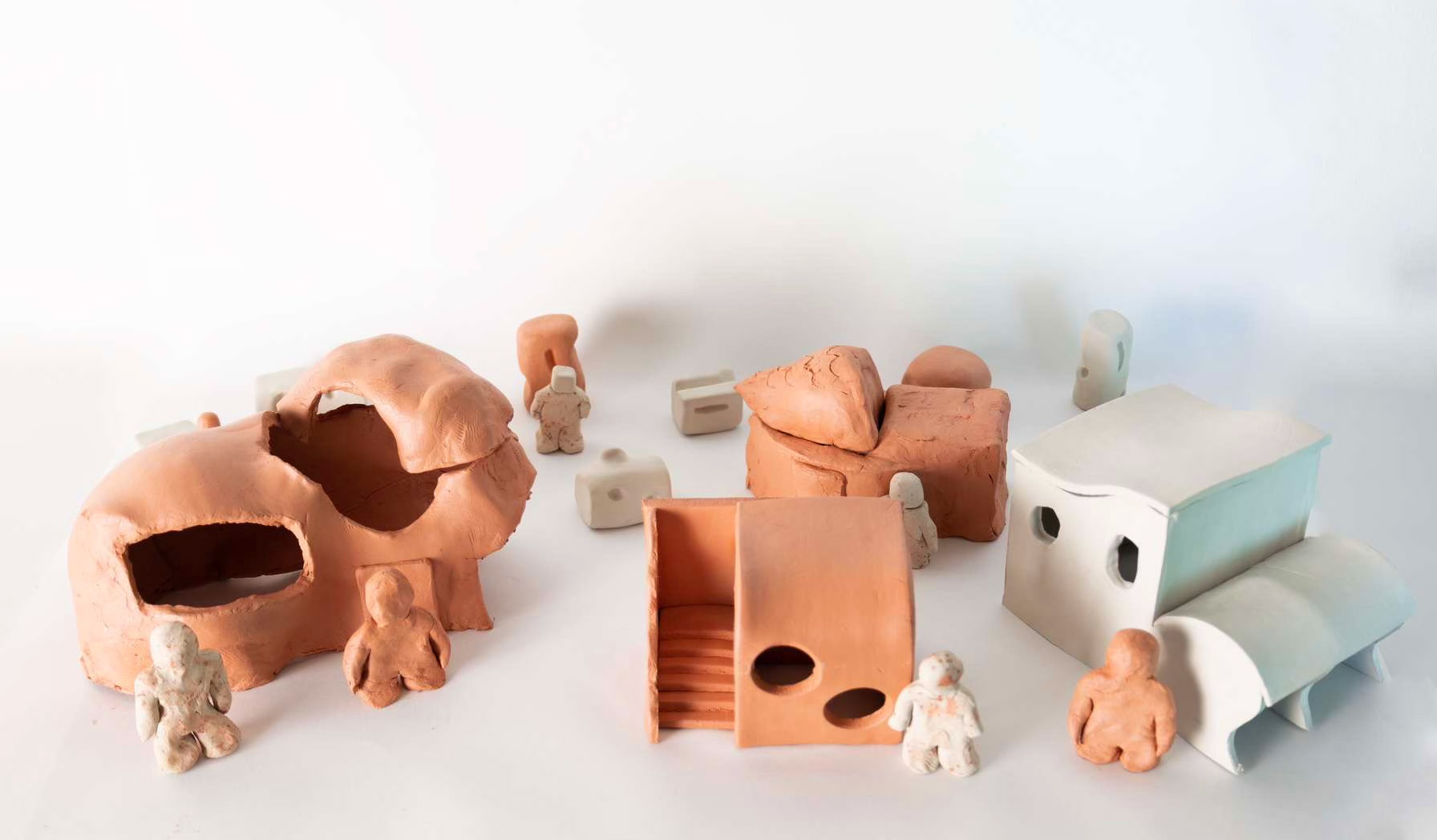
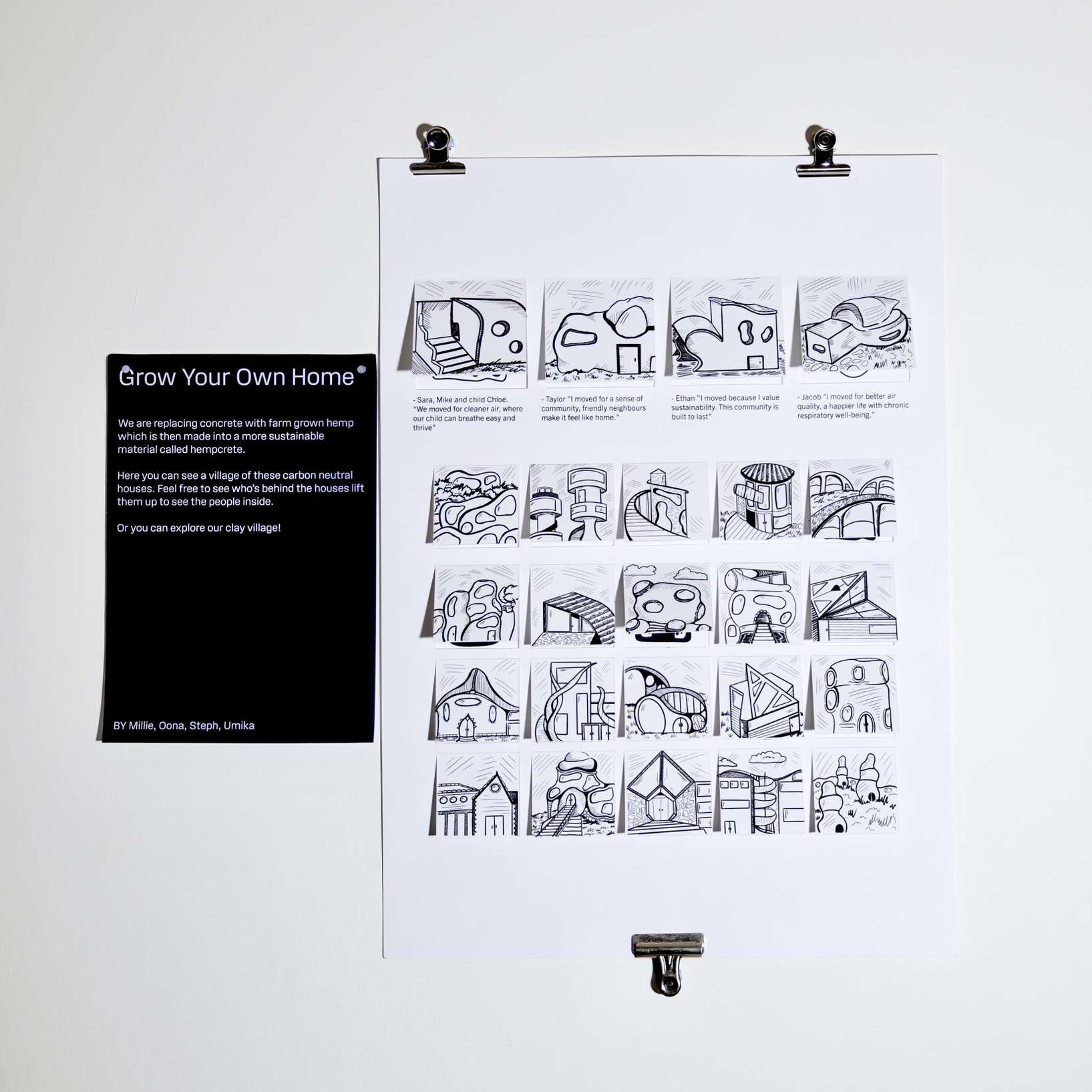
Exhibition:
We presented clay houses in our studio exhibition as a way for our peers to envision our imaginary future. We had an interactive element to our exhibit as the roofs of the four main houses could be lifted, revealing the unique personalities living in this community. Alongside the houses, we hung up a poster with illustrations of four personas and their reasons for moving into the community. Flaps of the poster lift to reveal persona illistration.
Branding process:
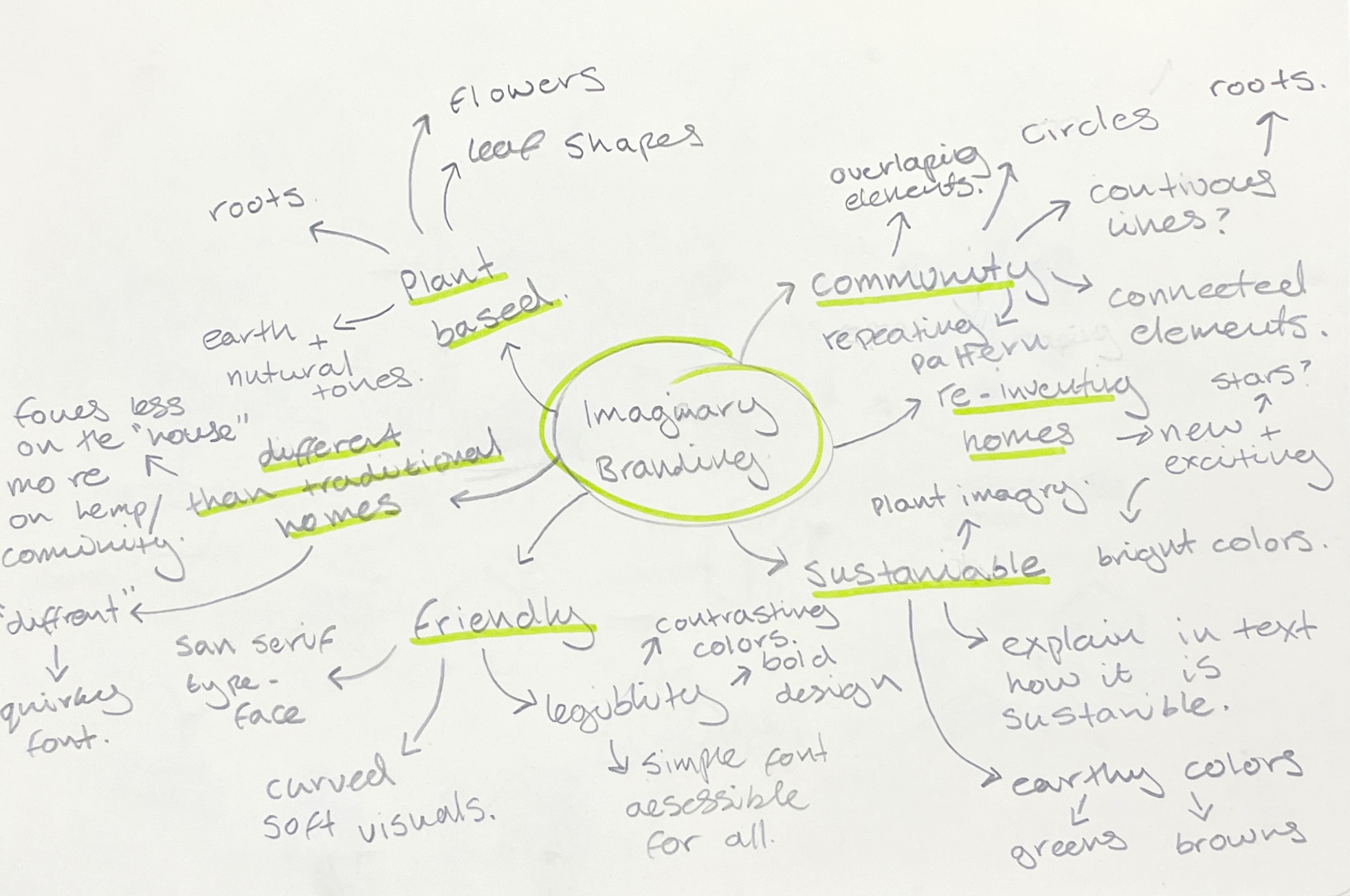

My team members and I all created individual branding varations for our imginary.
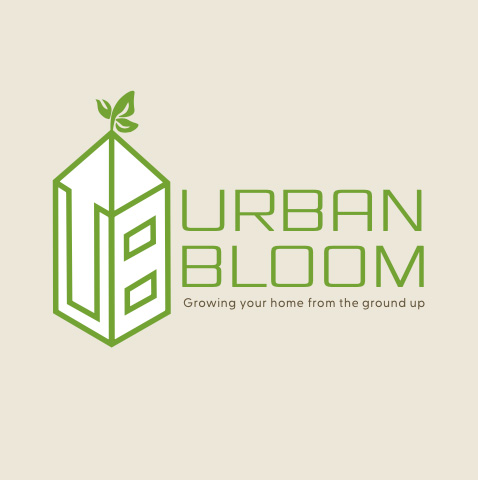
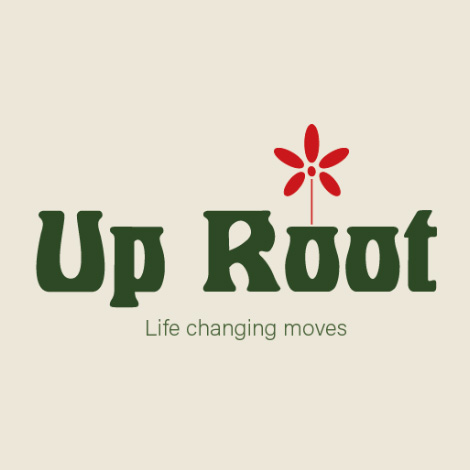
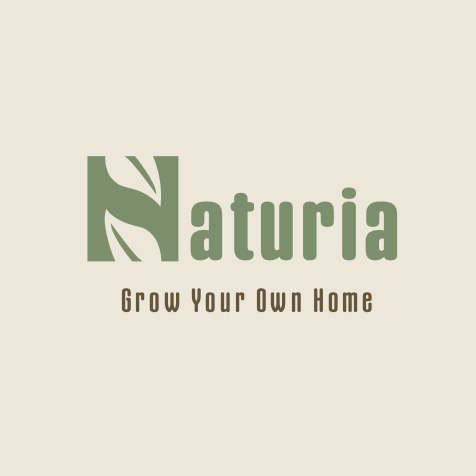
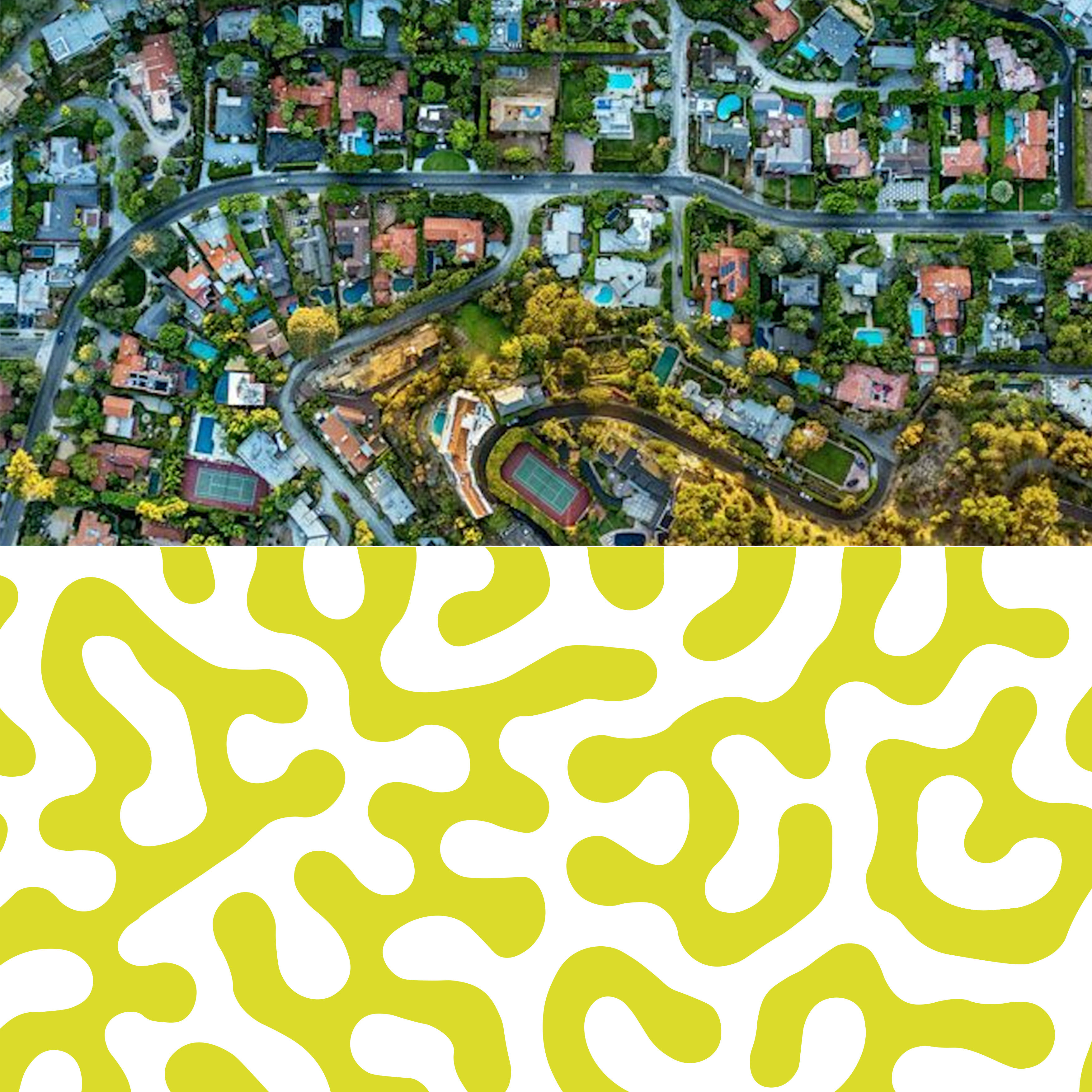
As a group and with input from Imgantation we decided to go forward with my branding. I chose to use a bright green as the primary color, referencing the hemp plant that the homes would be made out of. I also felt that a bright green felt more fresh and new, matching the fresh start of the occupants. I chose to use a slightly green-toned black to better go with the bright green. I chose a friendly San serif font to welcome the consumer. Additionally, I chose this typeface because the curves and twist reminded me of roots. When designing the pattern for the homegrown brand I took inspiration from organic imagery. The final pattern is based of roots. I also edited the pattern to resemble an aerial shot of the roads and culdesacs in a neighborhood.
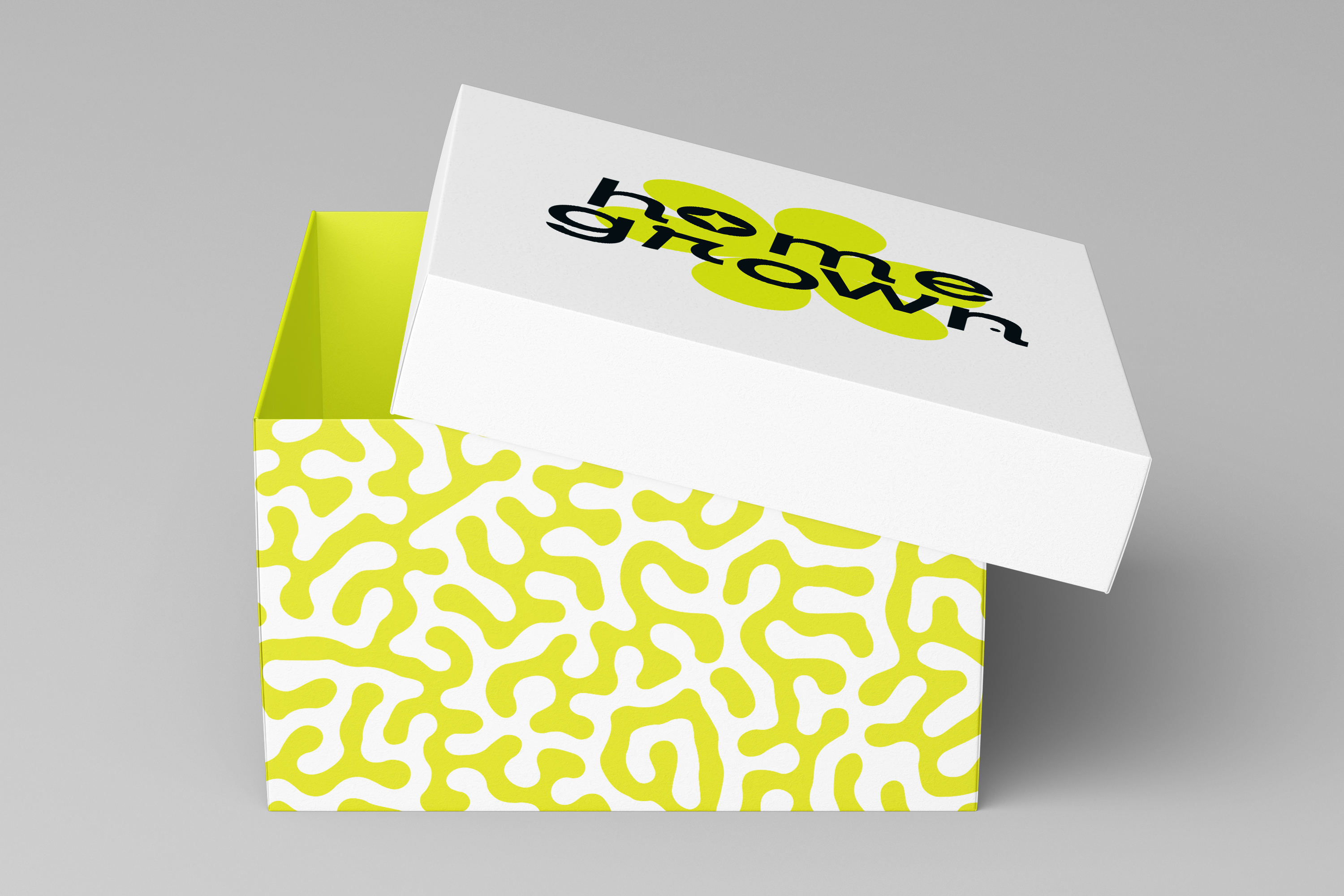
Final Outcome
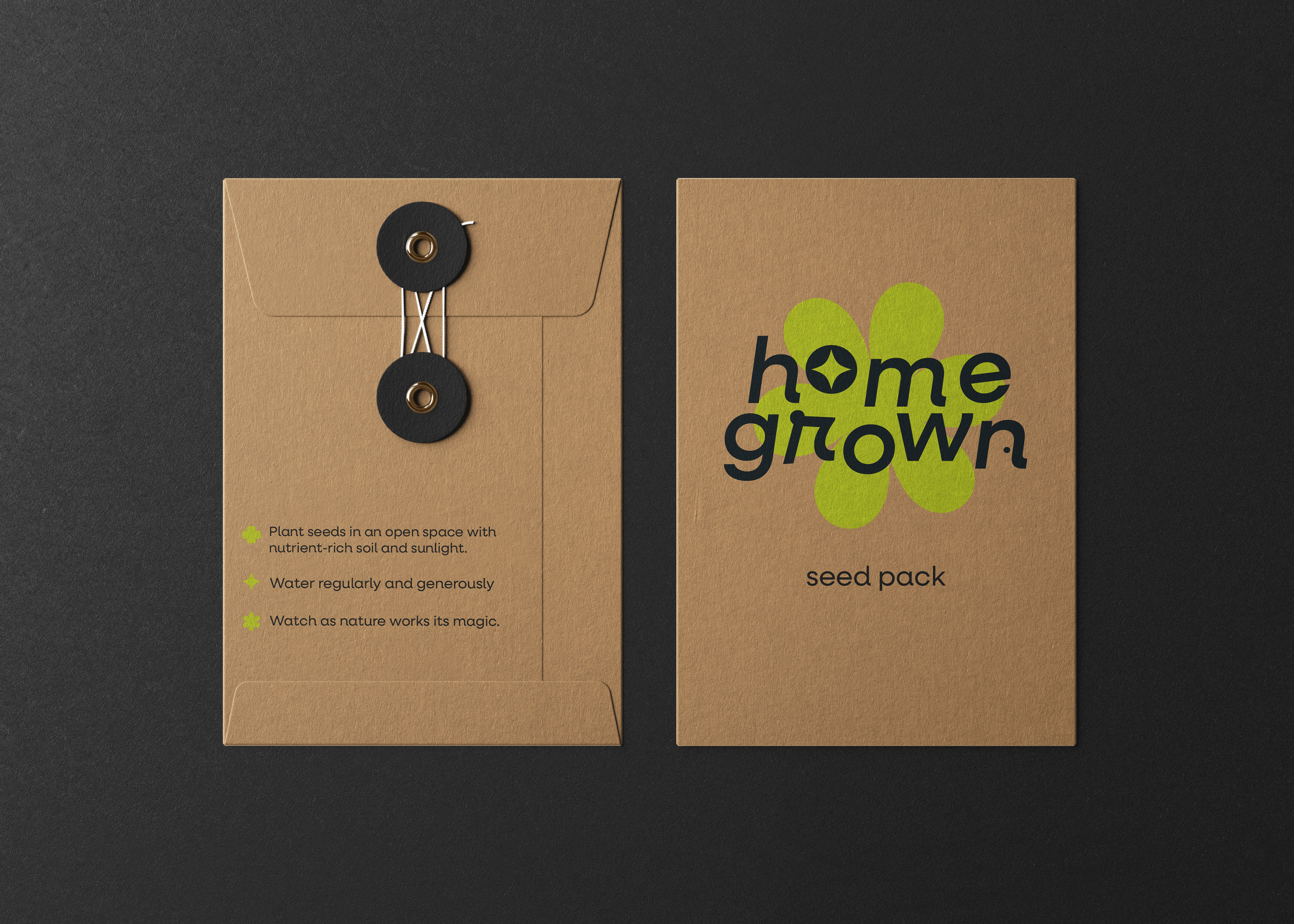
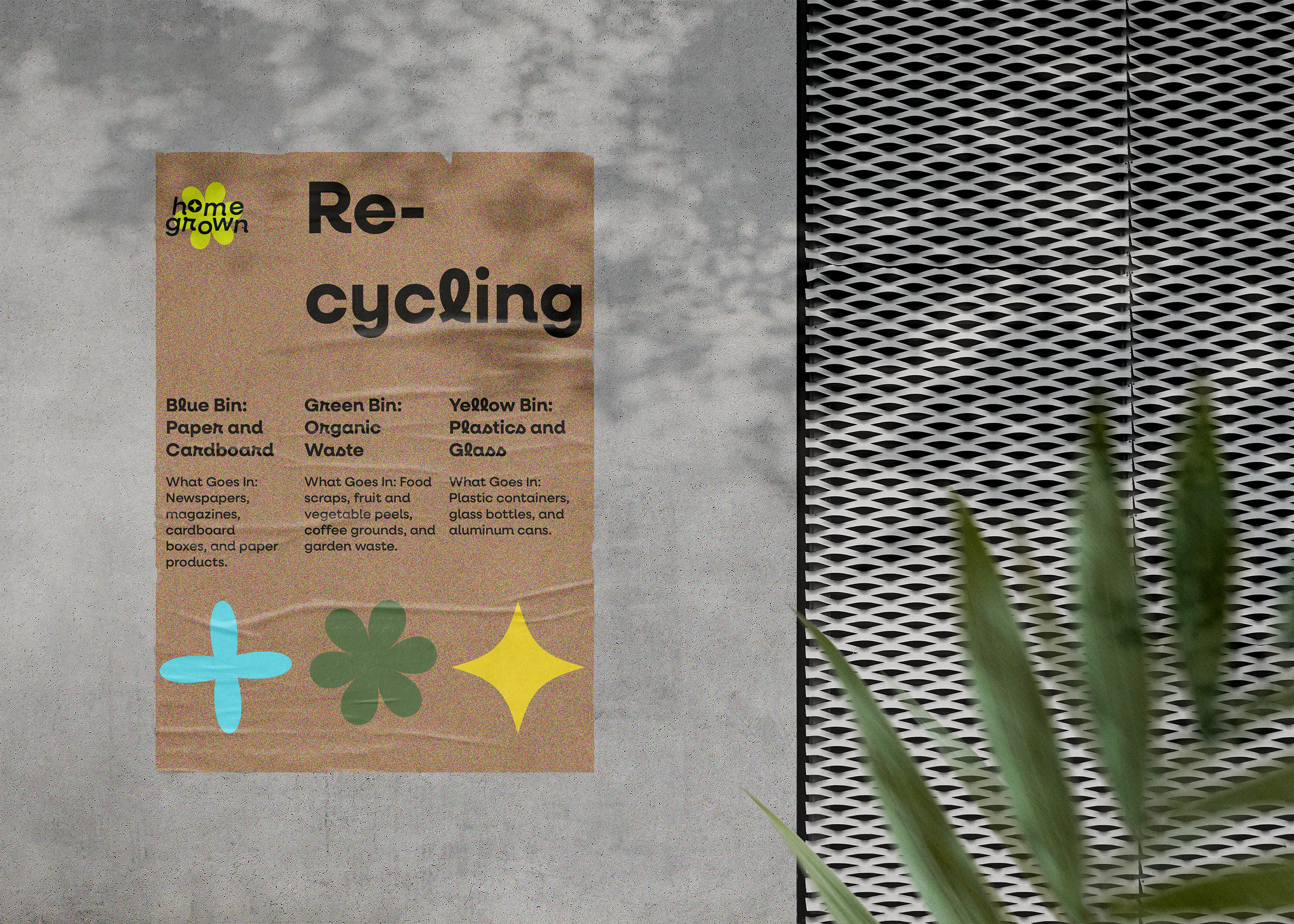
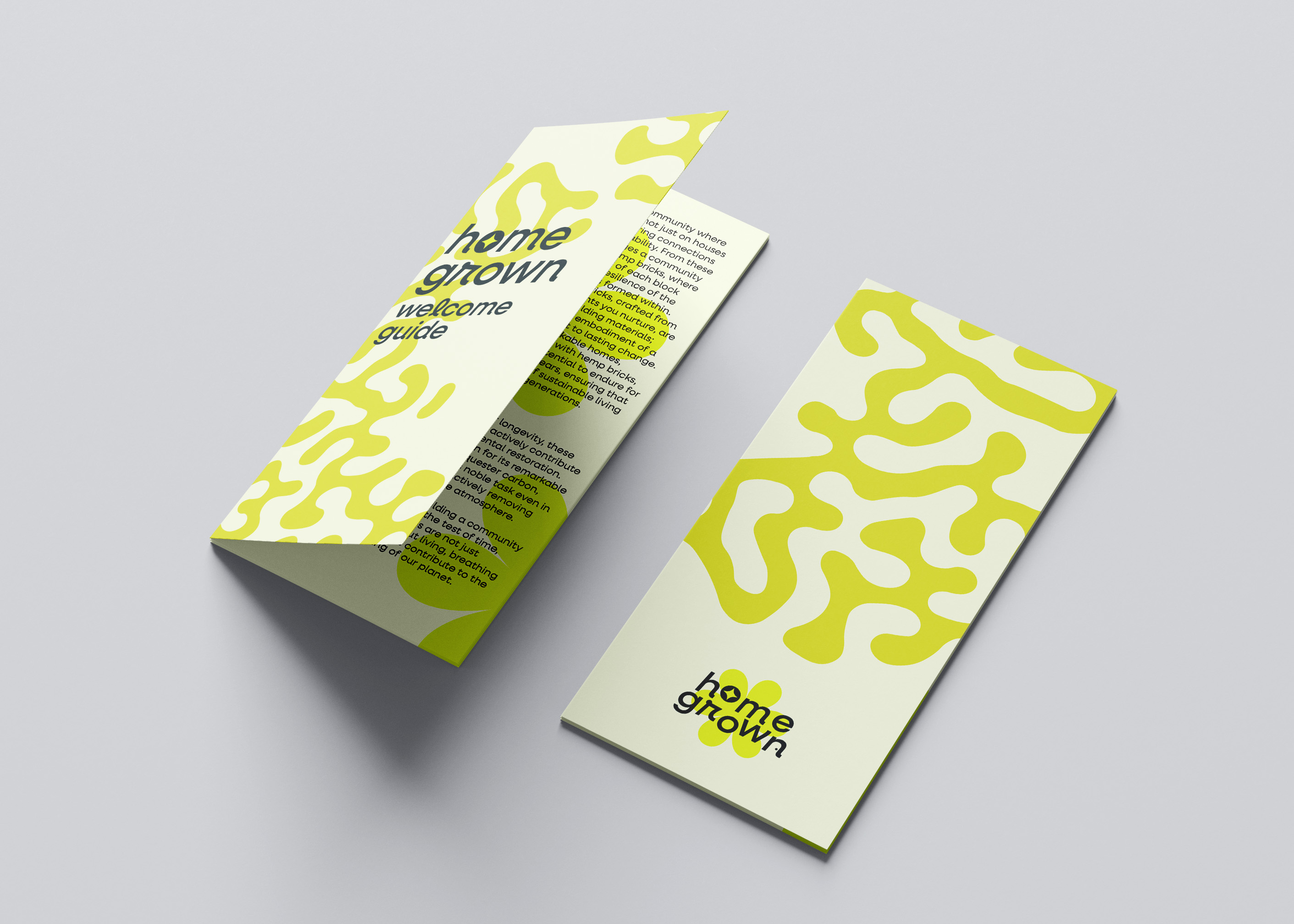
Reflection:
I think this project helped me gain confidence in myself as a designer. I found it helpful that we got to meet with Imagination so frequently, we got lots of useful positive feedback. Something that boosted my confidence as a designer was my branding approach being chosen by Becca, in the imagination interim critique. It was reassuring to hear that my brand communicated the values I aimed to with my design. Overall, I think this was a successful project. My team and I successfully imagined a post-growth world without concrete. We researched alternatives and created a more sustainable living community. We were able to communicate effectively as a group and delegate work based on people’s strengths. This project also helped me develop my presentation and time management skills.
Bibliography
ETA Zürich Knitted Concrete. [online] www.youtube.com. Available at: https://www.youtube.com/watch?v=spPpkPHK7Q0&t=54s
Gopal Mishra (2015). Concrete without Cement - A Green Alternative Fly Ash. [online] The Constructor. Available at: https:// theconstructor.org/concrete/green-concrete-without-cement- flyash-alternative/10667/.
Moynihan, M. (2019). Steel, concrete and climate change - The Institution of Structural Engineers. [online] www.istructe.org. Available at: https://www.istructe.org/resources/blog/steel-concrete-and- climate-change/.
P Kumar Mehta (2001). Reducing the Environmental Impact of Concrete. [online] Concrete International . Available at: http://ecosmartconcrete.com/docs/trmehta01.pdf.
Science Museum (2021). Building the Modern world: Concrete and Our Environment. [online] Science Museum. Available at: https://www.sciencemuseum.org.uk/objects-and-stories/everyday-wonders/ building-modern-world-concrete-and-our-environment#:~:text=The%20environmental%20impact%20 of%20concrete.
UK Hempcrete. (2014). Why building with hempcrete is good for the environment. [online] Available at: https://www.ukhempcrete.com/why-building-with-hempcrete-is-good-for-the-environment/.